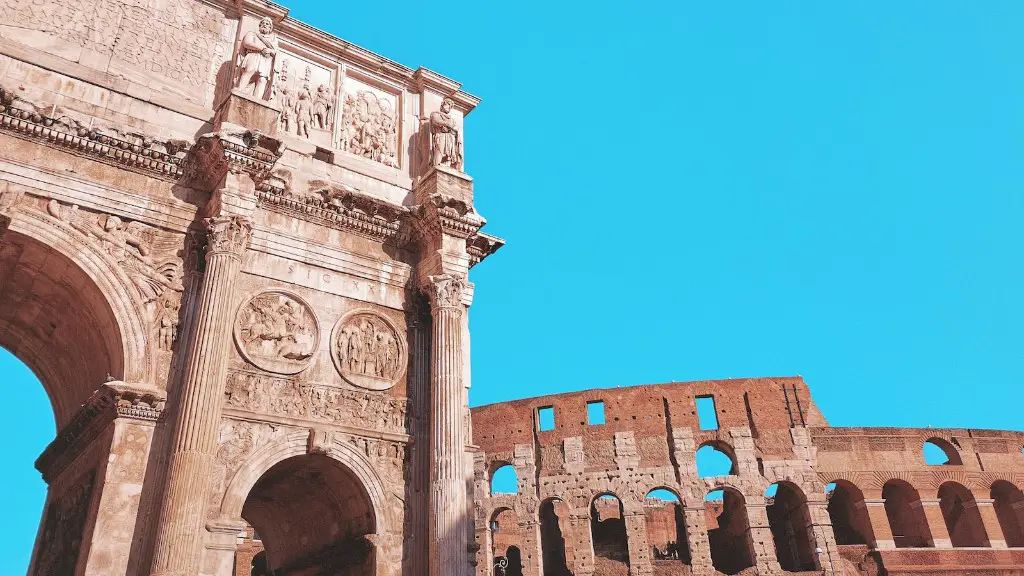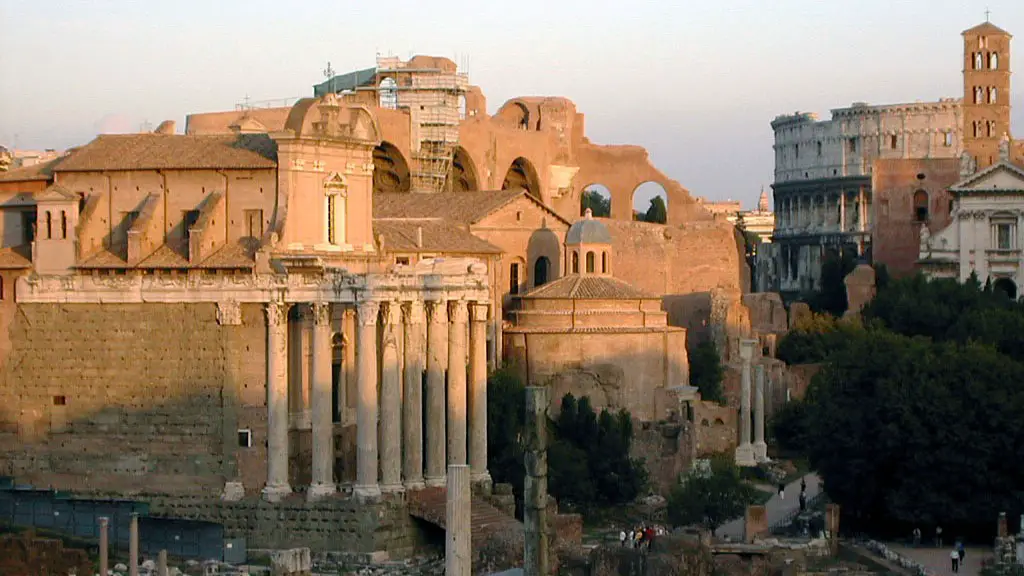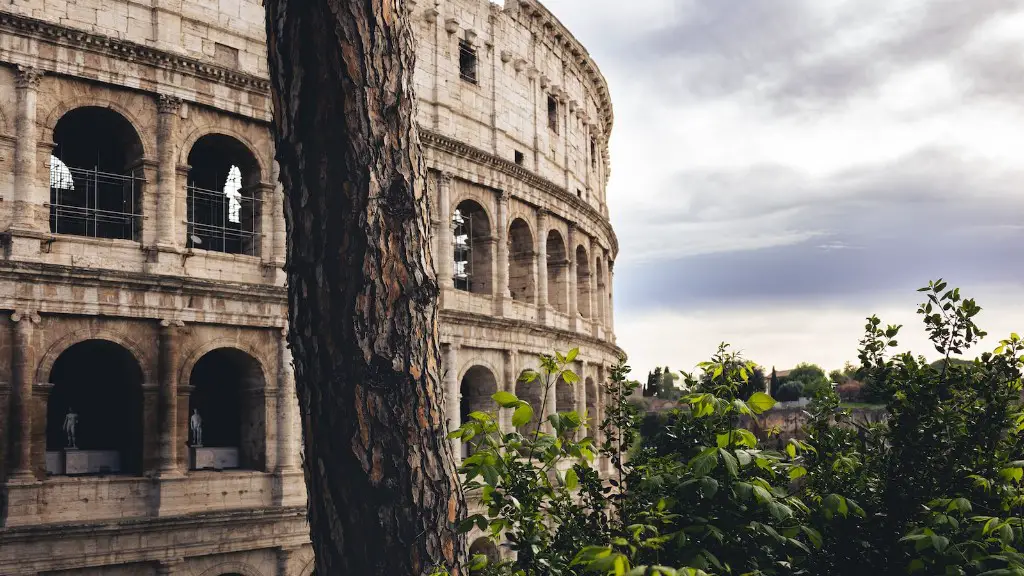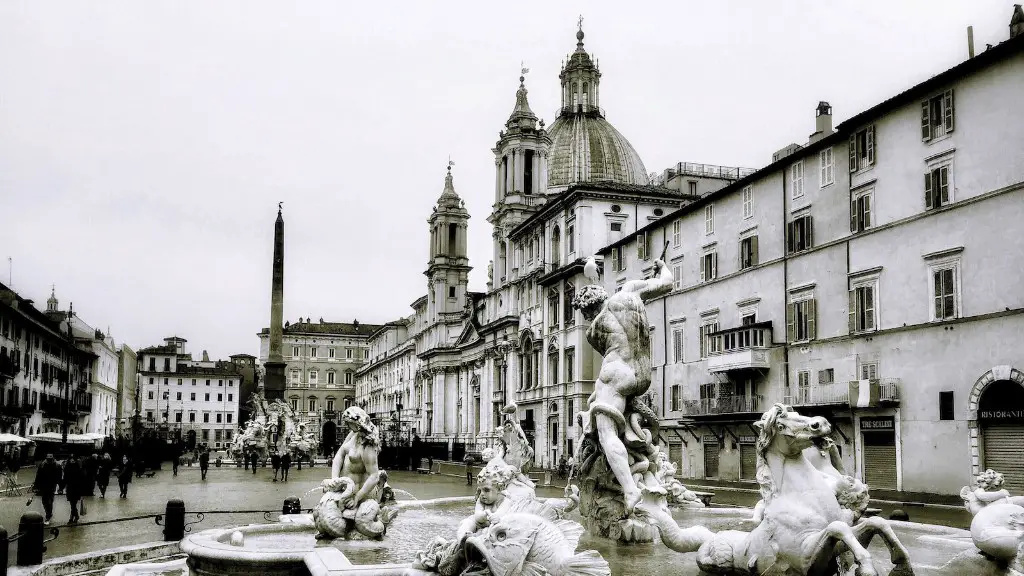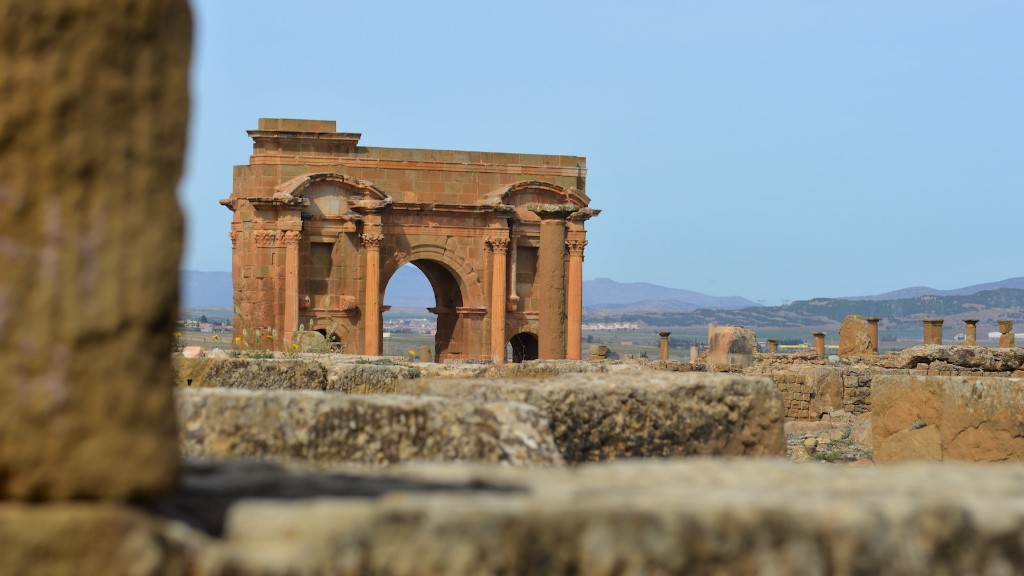The Roman Republic and Empire from around 500 BCE to 500 CE was a highly sophisticated and stratified society. At the top of the social structure were the patricians, a privileged elite made up of the wealthy and powerful. Below them were the plebeians, who were peasants, slaves, and all other citizens not born into the patrician class. This two-tiered system had great influence on many aspects of Roman life, including the economy and politics.
The patricians were the Roman elite. They had higher status, more wealth, and more power than the plebeians. They owned large tracts of land, took part in business activities such as shipping, banking and manufacturing, and held key political offices. Patricians were expected to serve in the Roman army and bear the costs associated with holding public office, contributing to the upkeep of public buildings, and providing entertainment for their social peers. They lived in lavish palaces and decorated their homes with expensive works of art.
In contrast, the plebeians were the majority of the population. They lived in modest homes and were employed mostly in manual labour. Most of them were small farmers, though some were employed in commerce and crafts. The Roman concept of citizenship did not give them the same rights and privileges as the patricians, and they were excluded from political decision-making. This had serious implications on their ability to advance economically, as they were essentially at the mercy of their patrician rulers.
In addition to the two main social classes, there were also slaves in Ancient Rome. Slaves were considered property and were not given any legal rights. They were used to supplement the labour of free citizens and to complete the tasks that were deemed too lowly for those of the elite. Slaves were mostly prisoners of war, but some were convicts or even the descendants of slaves. Unlike the patricians and plebeians, slaves did not have any rights, and their lives were constrained by the will of their masters.
The two social classes of ancient Rome represented the pinnacle of a highly stratified society. The patricians held all the wealth and power, while the plebeians were left to fend for themselves. Slaves had no rights and lived in a state of perpetual servitude. This two-tiered system had far-reaching implications for Roman politics and the economy, and the consequences can still be seen today.
Impact of Classes on Roman Economy
The harsh two-tiered social system of Ancient Rome had a marked effect on the Roman economy. The patricians, who held most of the wealth, had far more resources at their disposal than the plebeians, who were mostly small farmers. The patricians were able to leverage their finances to acquire larger tracts of land, and were able to bring in enough revenue to finance their political ambitions and luxury lifestyles. This wealth advantage allowed them to stay in power and pass their wealth down to future generations. In contrast, the plebeians had little chance to rise beyond their station or build financial security.
The disparity between the two classes also had an effect on the Roman economy as a whole. The plebeians, who made up most of the population, had limited access to resources and were unable to contribute to the economic growth of the Republic. This created an economic climate dominated by the patricians, who had access to capital, manpower, and land. This further reinforced the inequality of the two stratified classes and the economy suffered as a result.
The effect of the two-tiered social system was further exacerbated by the prevalence of slavery. Under Roman law, slaves were considered property and had limited rights. Slaves were used to supplement the free labour of the plebeians and to complete the tasks deemed too lowly for the patricians. This had the effect of suppressing wages and reducing the ability of the plebeians to participate in the economic life of the Republic.
The economic effects of the two social classes of ancient Rome were far-reaching and had serious implications for the Republic’s future. The patrician class, in particular, had a stranglehold on the economy and were able to maintain their power and wealth through their control of land, finances, and manpower. In contrast, the plebeians were unable to break free of the constraints of their station, and the economy as a whole was unable to grow and flourish as it should have.
Political Implications
The two-tiered social system of Ancient Rome had serious implications for the Roman political system. The patricians monopolised the political life of the Republic, holding all the key offices and wielding all the real power. This enabled them to enact laws that served their own interests and further entrenched their power. They also had access to the best military and legal education, ensuring that their views and policies were the ones that were heard and respected in the Senate.
The plebeians, on the other hand, were largely excluded from political decision-making and had little power to effect real change. They were denied the same educational and legal rights as the patricians, and were unable to rise beyond their station. This created a climate of disenfranchisement and discontent, which helped fuel the numerous slave revolts and other uprisings that occurred during the time of the Roman Republic.
Furthermore, the two classes were also divided along religious lines. The patricians practiced their own religion, observing religious rituals and taking part in the festivals of the state religion. The plebeians, on the other hand, were excluded from the higher forms of religion and were unable to take part in the same rites as the patricians. This helped to reinforce the separation between the two classes and further entrench the power of the patricians.
The two social classes of Ancient Rome had serious implications for the political system of the Republic. The privileged patrician class had a stranglehold on political decision-making, and the plebeians had no real power to effect change. This inequality was further reinforced by the division between the two classes along religious lines, creating a society stratified along class and religious lines.
Legacy of Classes
The legacy of the two classes of ancient Rome can still be seen today. The lasting effects of this two-tiered system can be seen in societies around the world, where social stratification continues to exist. This inequality can manifest itself in different ways, from the way certain people are excluded from opportunities and resources, to the suppression of wages and restrictions on human rights.
The Roman Republic and Empire was the pinnacle of a highly stratified society, with the patricians holding all the wealth and power and the plebeians having few rights or opportunities to advance. The implications of this system have been long-lasting and have had a profound effect on societies around the world. The legacy of this two-tiered social structure continues to be felt today, and is something that deserves our attention and action if we are to build a more equitable society.
Gladiators in Ancient Rome
Gladiators were another example of the two-tiered social system at work in Ancient Rome. Gladiators were mostly slaves, convicts, or prisoners of war. They were forced to fight each other in the arenas to entertain the populace, and were viewed as no more than a commodity by their owners. Gladiators were often viewed as lower than the plebeians in the social hierarchy, and were subject to extreme brutality and exploitation. This starkly illustrates the power of the upper classes over the lower classes, and how the two-tiered social structure was used to maintain their control.
The idea of a gladiator as a symbol of strength and courage was a powerful way for the patricians to demonstrate their power over the lower classes. Gladiatorial games were seen as a source of entertainment and a way for the patricians to showcase their wealth and power. They were used as a tool of propaganda, as well as a source of revenue for the patricians and their allies.
The brutal spectacle of gladiatorial combat also had a long-lasting impact on Ancient Roman culture. Gladiators were seen as heroic and were celebrated in the media and in the arts. The notion of a gladiator as a symbol of strength and courage was immortalised in literature, art, and film, and this has had lasting implications on the way we view heroism and confront death to this day.
Ideology of Classes
The two classes of ancient Rome were separated not only by wealth, but by ideology. The patricians embraced traditional Roman values, such as duty, honour and loyalty to Rome. The Plebeians, on the other hand, were more likely to embrace more philosophical and liberal ideals and were less likely to support the status quo. This ideological divide further reinforced the separation between the two classes and helped to reinforce the power of the patrician class.
The ideological divide between the two classes also had an effect on the Roman political system. The patricians favoured a more conservative approach to government, while the plebeians were more likely to embrace more radical ideas and to oppose the status quo. This had serious implications on the way laws and policies were enacted, as the plebeians had little power to effect real change.
The two social classes of ancient Rome were separated not only by wealth and power, but also by ideology. The privileged patrician class embraced traditional Roman values, while the plebeians embraced more progressive and liberal ideas. This ideological divide had a profound effect on the Roman political system, further entrenching the power of the patrician class and preventing the plebeians from challenging the status quo.
Influence on Everyday Life
The two-tiered social system of Ancient Rome had a profound effect on everyday life. The patricians had access to the best food and clothing, while the plebeians had to make do with modest rations. The patricians were also able to afford luxuries such as baths and private libraries, while the plebeians rarely had access to such amenities. This starkly demonstrates the power of the two classes, and how the two tiers of the social structure were used to reinforce the status quo.
The two classes were also divided along religious lines, with the patricians having access to the higher forms of religion while the plebeians were excluded from this privilege. This further reinforced the separation between the two classes, as the patricians were able to partake in religious rituals and participate in the state religion, while the plebeians were excluded from this higher form of worship.
The two classes of ancient Rome had a profound effect on everyday life. The patricians enjoyed luxuries and privileges that were denied to the plebeians. This inequality was further reinforced by the division between the two classes along religious lines, creating a social stratification that had lasting implications for the Roman Republic and its legacy to this day.
